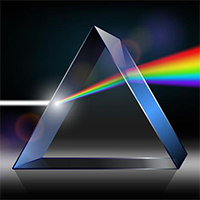SRC suppliers are at the forefront of many key sectors of the economy, including the pharmaceutical industry. Today we look at technologies provided by WITec, a German company that has established itself as a market leader in the field of nano-analytical microscope systems, as well as by Physical Electronics, the world’s leading supplier of UHV surface analysis instrumentation.

Combining Confocal Raman Microscopy with techniques such as topographic Raman imaging and Atomic Force Microscopy
Development, production and quality control in the pharmaceutical industry requires efficient and reliable control mechanisms to ensure the safety and the therapeutic effect of the final products. Not surprisingly, these products can vary widely in composition and application, presenting challenges to pharmaceutical researchers. Several properties of pharmaceuticals can be difficult to study with conventional techniques because of their inability to be used to chemically differentiate materials with sufficient spatial resolution and without damage or staining. Therefore, methods of analysis that provide both comprehensive chemical characterization and the flexibility to adjust the method to the investigated specimen are preferred in pharmaceutical research.

alpha300 R—the benchmark in Raman imaging systems
Confocal Raman Microscopy (CRM) is a well-established and widely used spectroscopic method for investigating the chemical composition of a sample. In pharmaceutical research CRM can be used to:
- Probe the distribution of components within formulations;
- Characterize the homogeneity of pharmaceutical samples;
- Determine the state of drug substances and excipients; and
- Characterize contaminants and foreign particulates.
The information obtained through the use of CRM is also invaluable for:
- Drug substance design;
- Development of solid and liquid formations; and
- Process analytics and patent infringement and counterfeit analysis.

Confocal 3D Raman volume image of a pharmaceutical emulsion
In pharmaceutical development it is of great importance to acquire information on drug composition and the distribution of chemical components. With confocal Raman images the distribution of the chemical components in diverse drug systems can be clearly visualized. CRM is a non-destructive method and combining it with other techniques, such as topographic Raman imaging and AFM, expands its analyzing capabilities. Thus, a variety of different pharmaceutical samples can be investigated and the chemical information from Spectral Raman analyses can be linked to topographic data and further surface characteristics. CRM and its correlative analyzing methods contribute to a comprehensive understanding of a pharmaceutical product and facilitate its development.

XPS and TOF-SIMS for the pharmaceutical industr
Surface analysis techniques that analyze the top few atomic layers of materials play an important role in the pharmaceutical industry. From production quality control to understanding surface interactions in biological systems, these analytical techniques are useful at all steps in the life cycle of a pharmaceutical for creating more effective products and processes. Examples where surface analysis can provide benefits include:
- Contamination identification and qualification
- Imaging of tablet components-drugs and excipients
- Surface segregation and coverage
- Packaging analysis
- Purity and cleanliness validations
- Sterilization studies
- Reverse engineering/patent infringement

Physical Electronics nanoTOF II ToF-SIMS instrument
X-ray Photoelectron Spectroscopy (XPS) and Time-of-Flight Secondary Ion Mass Spectrometry (TOF-SIMS) are two of the most commonly used surface analysis methods for studying pharmaceutical samples. The techniques are highly reliable and provide chemically specific complementary information:
- EXP provides quantitative analysis of elemental composition and short-range chemical bonding information. However, it may be difficult to distinguish large molecules that contain the same few primary elements.
- TOF-SIMS can distinguish molecular-scale components with high sensitivity but requires standards for quantitative analysis.
- Combined with cluster ion beams for organic profiling, XPS and TOF-SIMS can also provide 2-dimentional and 3-dimensional depth profiles and imaging.
Contact
For more information about WITec and Physical Electronics and the leading technologies they provide to the pharmaceutical industry, please contact us for an enlightening dialog on the topic. Click here to download the flyer



